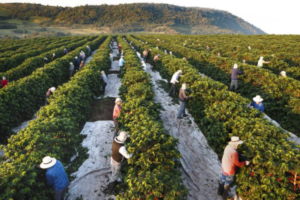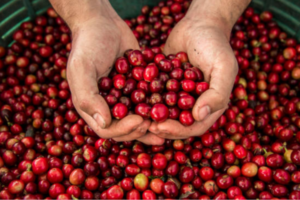Introduction
Coffee, the beloved beverage that fuels mornings and sparks conversations, has a rich and fascinating history. From its humble origins as a wild plant in the Ethiopian highlands to its global prominence today, the journey of coffee spans centuries and continents. In this article, we will delve into the captivating story of coffee, exploring its cultivation, trade, and cultural significance.
The Birth of Coffee: Ethiopia and the Discovery of Coffee Beans
The story of coffee begins in the lush hills of Ethiopia, where legend has it that a goat herder named Kaldi discovered the stimulating properties of coffee beans. According to the tale, Kaldi noticed his goats became energetic after eating the red berries from a certain bush. Intrigued, he sampled the berries himself and experienced a newfound vitality. This discovery marked the beginning of coffee’s journey into human consumption.
From Ethiopia to the Arabian Peninsula: Early Cultivation and Trade
Coffee cultivation spread from Ethiopia to the neighboring regions of the Arabian Peninsula, particularly Yemen, during the 15th century. Yemeni farmers were the first to cultivate coffee on a larger scale, establishing the earliest known coffee plantations. By the 16th century, coffee had become an integral part of Arabian culture, with coffee houses known as “qahveh khaneh” emerging as social hubs where people gathered to drink coffee, engage in conversation, and enjoy entertainment.
The Rise of Coffee in Europe: The Coffeehouses of the 17th Century
Coffee’s popularity continued to spread across the Arabian Peninsula and into Europe during the 17th century. The first coffeehouse in Europe opened in Venice in 1645, followed by establishments in other major European cities such as London, Paris, and Vienna. These coffeehouses quickly became centers of intellectual exchange and social interaction, attracting scholars, artists, merchants, and politicians. The lively atmosphere of these establishments earned them the nickname “penny universities,” as patrons could gain knowledge and insights for the price of a cup of coffee.
Coffee’s introduction to Europe sparked a cultural revolution, especially evident in the proliferation of coffeehouses across major European cities during the 17th century. These coffeehouses, known as “penny universities” for the intellectual discussions held within them, played a pivotal role in shaping European society. In London, coffeehouses became known as “penny universities” because for the price of a cup of coffee, patrons could engage in lively debates, exchange ideas, and absorb knowledge. Coffeehouses were democratic spaces where individuals from all walks of life could gather, regardless of social status or background. They became hubs for writers, artists, philosophers, politicians, and businessmen to converge, fostering the exchange of ideas and the birth of new cultural movements.
Coffee and Colonialism: The Global Expansion of Coffee Plantations
The demand for coffee surged in Europe, leading to the establishment of coffee plantations in various colonial territories. European powers such as Spain, Portugal, France, and later, the Netherlands, established coffee plantations in regions with suitable climates, such as the Caribbean, Central and South America, and Southeast Asia. The labor-intensive nature of coffee cultivation fueled the transatlantic slave trade, with enslaved Africans forced to work on coffee pla The Global Expansion of Coffee Plantations
As the demand for coffee grew in Europe, colonial powers sought to capitalize on this lucrative commodity. European nations established coffee plantations in their colonial territories, exploiting both land and labor to meet the growing demand. In the Americas, vast plantations were carved out of the landscape, particularly in regions with favorable climates such as Brazil, Colombia, and Central America.
A expansion of coffee plantations had far-reaching consequences, including deforestation, displacement of indigenous populations, and the brutal exploitation of enslaved labor. The transatlantic slave trade supplied the labor necessary to sustain these plantations, leading to the mass enslavement and forced labor of Africans in the coffee-growing regions of the Americas. ntations in the Americas.
The Birth of Coffee Cultivation in the Americas: Brazil and the Rise of Coffee Empires
Brazil and the Rise of Coffee Empires
Brazil emerged as a dominant force in the global coffee trade during the 18th and 19th centuries, transforming coffee cultivation into a highly profitable industry. The fertile lands of regions like São Paulo and Minas Gerais provided ideal conditions for coffee cultivation on a massive scale. Brazilian coffee barons, wielding significant economic and political power, amassed vast fortunes from coffee production. The rise of coffee empires in Brazil reshaped the country’s social and economic landscape, fueling urbanization, infrastructure development, and immigration. Coffee became Brazil’s primary export commodity, accounting for a substantial portion of the country’s wealth and economic growth.
The Modern Coffee Industry: Challenges and Opportunities
In the 20th and 21st centuries, the coffee industry faced various challenges, including fluctuating market prices, environmental concerns, and social issues related to labor rights and fair trade. Organizations such as Fair Trade International have sought to address these issues by promoting fairer wages and working conditions for coffee farmers. Additionally, the specialty coffee movement has gained momentum, emphasizing quality, sustainability, and traceability in coffee production.
Challenges and Opportunities
In the modern era, the coffee industry faces a myriad of challenges, including environmental sustainability, fair trade practices, and economic volatility. Climate change poses a significant threat to coffee cultivation, with rising temperatures, changing rainfall patterns, and increased incidence of pests and diseases affecting coffee yields and quality. Additionally, issues of social justice and fair trade have come to the forefront, as consumers demand greater transparency and ethical sourcing practices from coffee producers and retailers.
Organizations such as Fair Trade International and Rainforest Alliance have sought to address these concerns by promoting sustainable farming practices, fair wages, and environmental conservation in coffee-producing regions. The specialty coffee movement has also gained momentum, emphasizing quality, traceability, and direct trade relationships between coffee producers and consumers. By supporting small-scale farmers, investing in sustainable agriculture, and promoting social responsibility, the coffee industry can navigate these challenges and ensure a more equitable and sustainable future for all stakeholders involved.
Conclusion
The history of coffee is a testament to its enduring appeal and cultural significance. From its origins in the highlands of Ethiopia to its global presence today, coffee has transcended geographical boundaries and shaped societies around the world. As we savor our daily cup of coffee, let us not forget the centuries of history and the countless hands involved in bringing this beloved beverage from planting to cup. By understanding and appreciating the rich and complex history of coffee, we can cultivate a deeper appreciation for this remarkable drink and the global community it unites.



